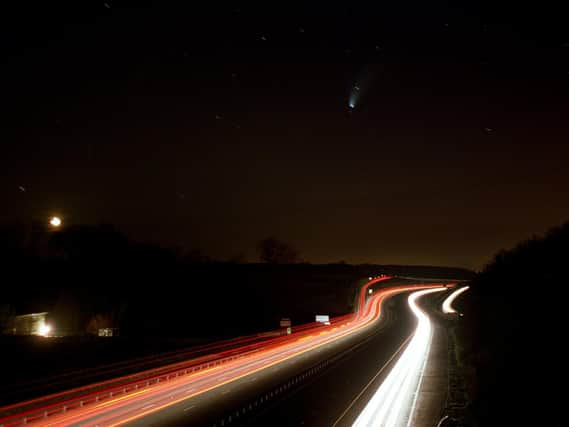Stargazers hope to spot Comet Swan and its 11m mile long tail


The blue comet with a long wavy tail, estimated to be 11m miles long, has already been seen spotted by observers in countries in the southern hemisphere, including Brazil, Bolivia and Sudan.
East Yorkshire astronomer George McManus said there is a narrow window of opportunity to see it between now and the end of the month.
Advertisement
Hide AdAdvertisement
Hide AdBut people will need to have a pair of binoculars and it is not that easy to find. They will also have to get out of bed extremely early.
“It has been seen by quite a few people in the southern hemisphere and is now working its way into visibility in the northern hemisphere,” said Mr McManus, who suggested Wednesday morning could be a good time to look for it.
“The sky starts to get lighter from 4am, so if you are going to have any chance to see it, it will be between 2am and 4am.
“Come the end of the month it starts getting closer to the sun, and further from the earth. As the comet gets closer to the sun, they tend to vaporise and form tails.”
Advertisement
Hide AdAdvertisement
Hide AdHe said people should look towards the south-east part of the night sky, between Aries and the Andromeda constellation.
But he warned: “You can never get excited about seeing a comet because they are so unpredictable.
“It’s almost as easy to forecast the movement of comets as the weather.”
Comets he said are like "large dirty snowballs" and pictures of Comet Swan showed it trailing a long tail.
Advertisement
Hide AdAdvertisement
Hide Ad"It isn't straight, it is like a dog wagging its tail or like a snake.
"Comets are always different. Hale-Bopp (which was seen in 1995 and was one of the brightest for many decades) developed a fantastic tail, which then split into two."